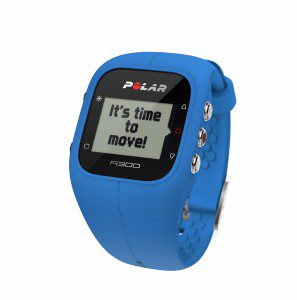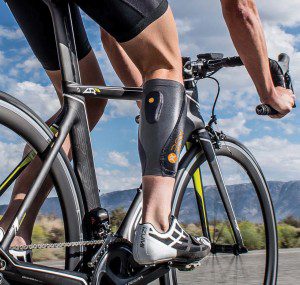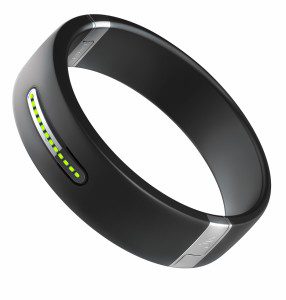Track your progress
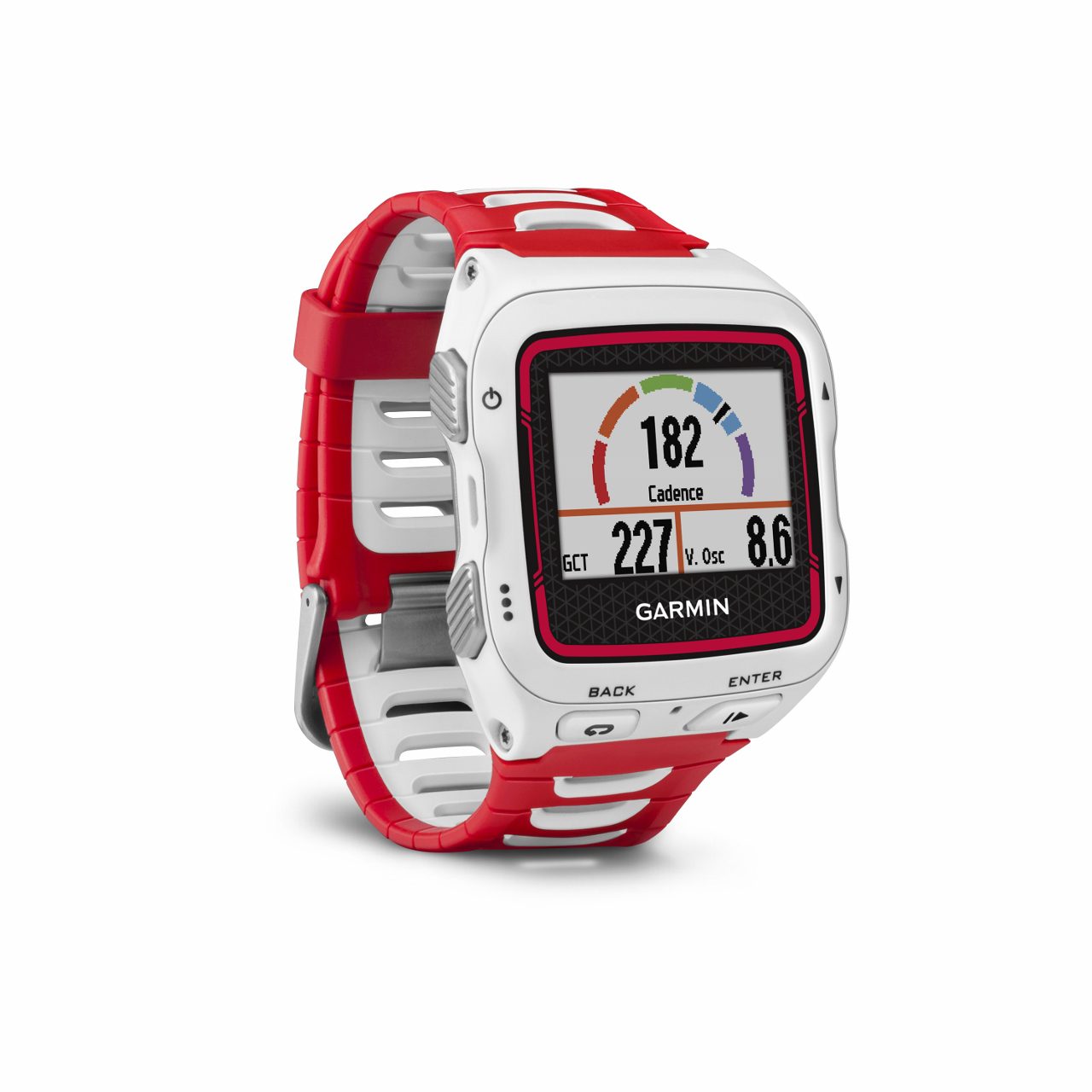
Monitor your Progress – Wearable Technology
By: Gus Alexandropoulos
No longer a sci-fi dream, sophisticated wearable technology is among the most innovative contributions to sport over the last few years. Whether worn on wrists, tucked into shoes or neatly into a calf sleeve, these new devices provide instant data on output giving athletes and coaches tools to transform training and performance. We’ve tested a few of the hottest newcomers to give you the scoop for your upcoming race season.
With its easily customizable wrist band, the Polar A300 is a great choice for anyone wanting a good-looking watch to track their daily activity. The A300 can monitor movement, calories burned and distance travelled. It also measures movement during sleep, which can help athletes assess if they are sufficiently recovering during their sleep cycle. A vibrating alarm will remind athletes if they have been inactive for extended periods of time (think sitting at a desk staring at a computer screen) and the watch can also be paired with a heart rate sensor for data collection during more vigorous training. Finally, all this information can be downloaded to a computer or smart phone for more in-depth analysis.
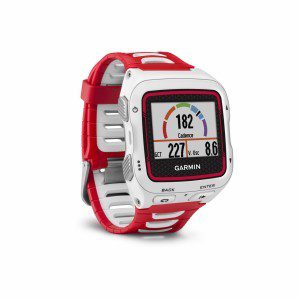 Garmin Forerunner 920XT $540; $600 FOR BUNDLE VERSION
Garmin Forerunner 920XT $540; $600 FOR BUNDLE VERSION
If knowledge is power, then triathletes using the waterproof Garmin 920 XT must be dominating their races. Seriously, this watch compiles a surprising level of training data, ensuring workouts are optimized for maximum gains. Not only does the watch monitor all the classic information (heart rate, time, distance, speed), but it also offers triathletes the ability to gather more esoteric data like cadence, vertical oscillation and ground contact time. The watch is also ANT+ compatible, which allows it to connect to any ANT+ power meter when training on the bike. And, to make sure that important messages and texts are not missed when working out, triathletes can pair the Garmin 920 XT with an Android or iOS phone to display any incoming messages. With all these features, it’s not surprising that this collected data is also downloadable to a computer to further help fine tune workouts and improve performance.
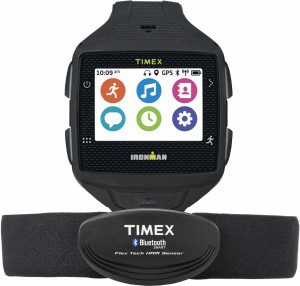 Timex Ironman One GPS+ $499; $549 WITH HRM
Timex Ironman One GPS+ $499; $549 WITH HRM
The new Ironman One GPS+ combines many features found in traditional sport watches with the functionality of a smartwatch. Triathletes can track speed distance and pace and easily share this data with Strava, MapMyRun and RunKeeper. More novel features include four gigabytes of space for music, which can be streamed wirelessly to Bluetooth headphones, as well as the ability to have workouts tracked in real-time by friends and family. Triathletes can also send and receive messages without having to carry a paired smartphone thanks to the watch’s 3G mobile data connectivity. This feature also allows athletes to pre-program and quickly send emergency messages in case of an injury or other unforeseen circumstances. Finally, Timex has specced an easy-to-read Qualcomm Mirasol touch screen that’s surprisingly effective even in bright sunlight conditions.
Stomping Power RPM2 soles $600
The RPM2 insoles are a wireless pressure-sensing sport performance tool that could change the way athletes currently track power, cadence and bilateral equivalence (right/left discrepancies). As a gait-analysis tool, the insoles are an incredible resource that could help with injury prevention by allowing wearers to understand side-to-side imbalances with quantifiable data. Because they are designed for periodic testing rather than ongoing use, they won’t replace power meters but they do offer an excellent occasional alternative.
The box comes with the soles, a wireless charger and a set of easy-to-follow instructions. To get the insoles up and running you simply remove the insoles in your runners and slide the RPM2’s in as you would an orthotic. With a wide range of sizes (eight available) you will be able to dial in the right fit. Register the insoles on the company website, await account approval and then follow instructions for Bluetooth pairing via a registration code on the website.
The only slight drawback is that re-pairing is required if the insoles lose pairing. The wireless charger is easy to use, but each sole requires 45 minutes of charging time. – LARS JORGENSEN
Lazer Genesis LifeBEAM Helmet $229
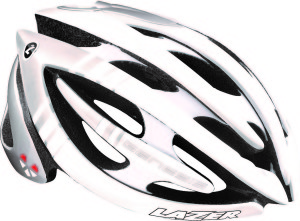 The Lazer Genesis LifeBEAM helmet not only protects triathletes from head injuries during a bike accident, but it also wirelessly monitors heart rate. Lazer has added an ANT+ heart rate sensor (with a 15-hour runtime between charges) in the rim of the helmet eliminating the need for traditional and occasionally restrictive chest mounted sensors. The helmet comes in at a respectable 280 g, features Lazer’s comfortable Roollsys retention system and has numerous vents to help keep riders cool in warm conditions.
The Lazer Genesis LifeBEAM helmet not only protects triathletes from head injuries during a bike accident, but it also wirelessly monitors heart rate. Lazer has added an ANT+ heart rate sensor (with a 15-hour runtime between charges) in the rim of the helmet eliminating the need for traditional and occasionally restrictive chest mounted sensors. The helmet comes in at a respectable 280 g, features Lazer’s comfortable Roollsys retention system and has numerous vents to help keep riders cool in warm conditions.
No longer do athletes need to be poked and prodded to get lactate threshold measurements to gauge fitness and training zones. Once the realm of exercise physiologists and elite and Olympic athletes, the BSXInsight calf sleeve with lactate sensor allows athletes of all levels to determine their own lactate threshold and appropriate training zones. It’s the world’s first wearable unit without a lab visit or blood draw. The BSXInsight takes the guesswork out of subjective or perceived exertion, translating bio signals from deep within the calf muscle. The goal of such testing is to identify a significant jump in lactate levels – meaning understanding the highest intensity (or fastest pace) an athlete can manage while maintaining a steady increase in blood lactate.
The monitors are small pods and there are different versions for runners, cyclists and multisport athletes. They are placed in a compression sleeve with holes for the sensor measurement readings. The system also records pace and heart rate from an ANT+ heart rate strap, ANT+ power meter, or ANT+ footpod and relays the data to your phone.
Jabra Sport Pulse Wireless Earbud Headphones with Built-In Heart Rate Monitor $230
Although they’re heavier than standard headphones, they certainly come with a lot of perks that negate that extra weight. With no wires to negotiate, superior dolby digital sound and in-ear heart rate monitor, the Jabra headphones deliver convenience and performance in a smart looking package. They come with four different ear buds and four ear wings for personalized fit and comfort. The wing design locks them in place so they stay put even with vigorous movement, making them ideal for tri training. Built to be durable, they are highly waterproof. They maintain their charge well and the heart rate measures accurately compared to a standard heart rate strap. The companion Sportlife app is easy to use and features real-time voice coaching. The headphones also synch with iTunes. These new sound machines will give your training and listening a boost. – LJ
Jaybird has now expanded into the fitness tracking market with their new Reign. The wrist activity tracker knows when you’re walking, running or swimming. An ankle strap also lets the device track cycling data, but the Reign’s signature feature is what the company has termed “Go-Zone.” The Go-Zone is a calculation the product and its corresponding app make based on heart rate variability. The Reign also accurately tracks your sleep patterns. The wristband itself has a sleek design. It comes in black, white or green and it can be worn with casual clothing. The actual tracking pod is small – about 1 cm by 3 cm – and magnetically clips into the usual wristband, a sportband or the cycling ankle strap. It swaps out easily. The pod has a small LED progress bar telling you how close you are to reaching daily fitness goals.
